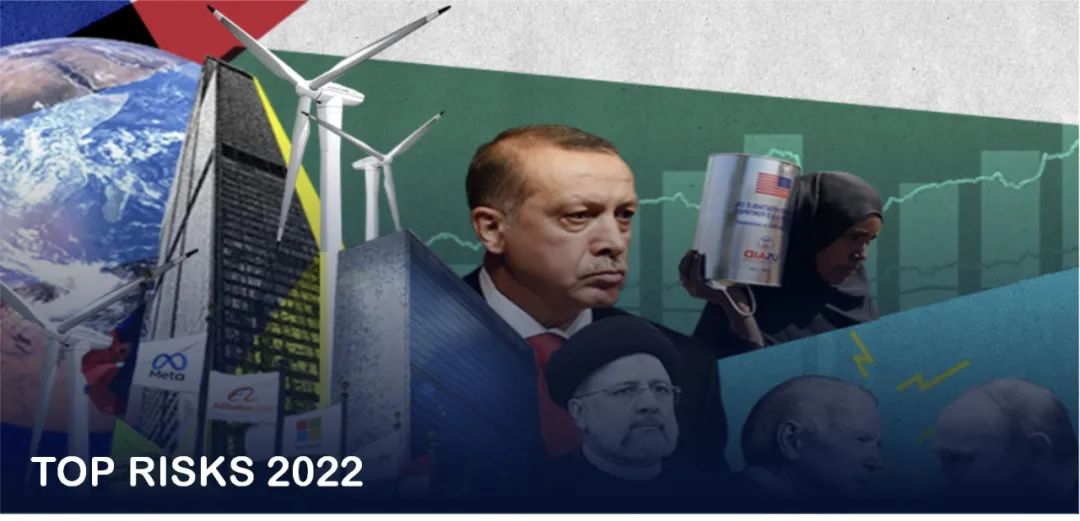
As a well-known consulting organization in the United States, Eurasia Group publishes its annual top ten global risk report at the beginning of each year, which has become a brand activity of the group and a recognized authoritative report. It has attracted more and more attention because of its vivid language, sharp views and deep and wide analysis.
At the beginning of January 2022, Eurasia Group released its "Top Ten Risks in the World in 2022" forecast report, which was as exciting and eye-catching as ever. The report put forward a new concept (perhaps not initiated by the group): "G-0" era. We are all familiar with G20 and G2.But what is "G-0"? That is to say, in the era of intensified disputes between big countries, the current big countries have been unable to assume global leadership and become weak; However, the new big country has not risen, and it is difficult to assume its due responsibility as a big country, leading to a "power vacuum" in the world. In fact, this is the Kindleberger’s Trap proposed by charles king Delberg, a professor at MIT.
Without further ado, the following is the "Top Ten Risks in the World in 2022" briefly compiled and compiled by Qingquan, and presented to you in reverse order (the original English report is 26 pages long, which is arranged in positive order).

No.10: Turkey
(Turkey)
In 2022, Turkish President Recep Tayyip Erdogan will drag Turkey’s economy and international prestige to a new low. He tried to reverse his declining public opinion support rate before the 2023 general election.
The support rate of Erdogan and his ruling Justice and Development Party among Turkish voters is lower than ever. The reasons are obvious: high unemployment, soaring inflation, weak lira and greater volatility. Erdogan hopes to build an export economy driven by a weak currency in the 1990s. The price is that people become poorer and more angry.
Erdogan’s goal is 2023, but the impact of these policies will be felt this year. He will try to appease families and resume credit expansion, but the risk supports more dollarization. The new measures announced at the end of December will ease the economic pressure in the short term, but will aggravate the financial and inflation risks, which may lead to accelerated economic disintegration.
Even if Washington chooses a more limited response, these developments will trigger Erdogan’s subconscious reaction. His unstable choice will also aggravate people’s concerns about the risk of Turkey’s major over-expansion in Syria and the risk of conflict with Greece or Cyprus in disputed waters. The collapse of lira and runaway inflation weakened voters’ ability to make ends meet.
If the economic situation deteriorates faster, Erdogan may be forced to hold an early election this year, which will aggravate the above risks.
(Qingquan: In fact, the risks caused by Turkey and Erdogan have spread to Kazakhstan and other Central Asian regions. Turkey set up the "Turkic-speaking Countries Organization" in Central Asia last November. Behind it, a group of medium-sized powers began to go their own way and find another way in the game between big countries and the gap between eastern and western civilizations. )
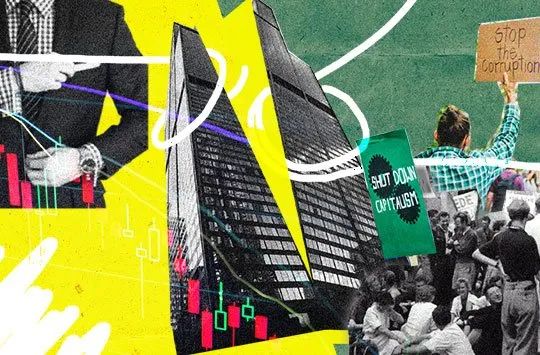
No.9: The company lost in the cultural war.
(Corporates losing the culture wars)
The most famous brands in the world (Apple, Facebook, etc.) are making record profits. But they will have a more difficult year to control politics. Driven by the "abolition of culture" and social media, consumers and employees will put forward new requirements for multinational companies and the government that supervises multinational companies. Multinational companies will have to spend more time and money in environmental, cultural, social and political minefields.
The consumer-employee-company board is on the defensive. On the other hand, social media is more powerful, ubiquitous, and the threat of "cancellation"-in this case, consumers exclude or prevent companies from entering the market-is real. This year’s political and sports calendar means that activists have ready-made flashpoints to highlight separatist issues: the Beijing Winter Olympics (human rights), FIFA World Cup Qatar 2022 (ditto) and the mid-term elections in the United States (voting rights, abortion). The emergence of the COVID-19 pandemic, even if it is slow and stagnant, has provided influence to employees: "Resignation" means that the company needs to become more attractive to new employees, who are still more influential in changing the company from within.
What are the needs of consumers and employees? They want the company to take a stand on the issue of "culture war", such as workplace diversity, voting rights, forced labor and child labor, supply chain that respects the environment and human rights, free speeches and so on.
(Qingquan: With the intensification of ideological and civilized conflicts between the East and the West, those multinational companies with huge market share and important production and operation bases in the United States, Europe and China will face "double risks". They will become rats in the bellows, suffering from gas at both ends. )
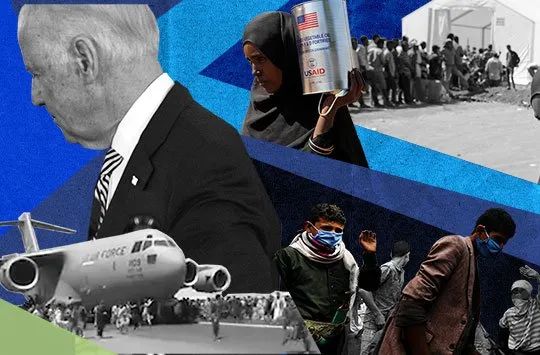
No.8: global power vacuum
(Empty lands)
The United States is no longer interested in playing the role of "global police". And Beijing has no intention (or is not ready) to replace Washington.
No matter how many times Biden said "America is back", spending cuts are still the consensus of the two parties in the United States. To some extent, the United States has turned its eyes overseas, mainly focusing on confronting the rise of China.
Other big countries that are beneficial to global stability, such as the European Union, Britain and Japan, will exert greater influence without completely filling the global power vacuum.
No one can fill the global power vacuum, and many countries and regions will bear the consequences.
Afghanistan is the most obvious example. In the summer of 2021, the collapse of the Ghani government and the chaotic withdrawal of troops put Afghanistan in the hands of extremist, disorganized and inexperienced Taliban forces. Obviously, the Taliban can’t control most parts of Afghanistan, and they try to stop the local Islamic State branches from doing things, but armed terrorists from other parts of the world are hiding in the vast and unmanageable areas of the country. The intervention ability of the United States is very limited, and China is not interested in it. Afghanistan is returning to the global situation before 9/11 and becoming a magnet for international terrorism.
In addition, the risk of terrorism is also very serious in the Sahel region of Africa, where management is weak; The seven-year war between the Saudi-led alliance and the Iranian-backed Houthi rebels has also brought similar risks; Myanmar and Ethiopia are in the throes of civil war; During the Cold War, the poorly managed areas in Asia and Africa became the battlefields of proxy conflicts between Washington and Moscow.
Competition among great powers is global and zero-sum.
(Qingquan: The big countries in the world are unwilling to take responsibility and contribute public goods. This is the real scary place, which is the so-called "Gindelberg trap". The Gindelberg trap was put forward by charles king Delberg, a genius of Marshall Plan who taught at MIT after 1950s. He believed that the disaster in 1930s originated from the fact that the United States replaced Britain as the world’s largest power, but failed to assume the responsibility of providing global public goods like Britain, and continued to hitchhike in the global cooperation system (just like China is hitchhiking in the United States today). As a result, the global system collapsed and plunged into depression, genocide and world war. The problem now is that China is not showing its strength in the international arena, but showing weakness. If China continues to show weakness and the United States continues to "stand by", it is bound to fall into the Gindelberg trap. )
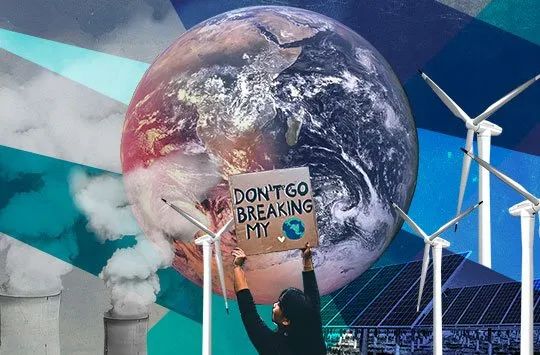
No.7: Climate problem, two steps forward and one step back
(Two steps greener, ones tep back)
This is a particularly destructive period in the global transition from fossil fuels to renewable energy. As a result, consumers are facing rising energy prices and the persistence of recent conflicts between policies and climate targets.
In 2022, the long-term decarbonization goal will conflict with the short-term energy demand. The pressure of rising costs will intensify in 2022, forcing the government to make an unpleasant choice: either appease anxious voters with policies to postpone climate targets, or stick to it in a hostile and unpredictable energy market environment.
This year’s energy demand, production and investment will remain out of sync, because the transition to a global economy driven by renewable energy will become more and more popular. In the short term, on the one hand, major economies are trying to squeeze the share of fossil fuels in their energy structure, on the other hand, they are not investing enough in renewable energy or backup solutions.
The economic impact will appear this year. The soaring retail and wholesale energy costs at the end of 2021 will destroy the economic growth prospects of most parts of Europe and Northeast Asia before 2022.
This year, there will be few coordinated global responses to energy shortages. The EU bases its economic and geopolitical agenda on long-term climate policy leadership, so it will not reverse the process in its efforts to decarbonize and set global green standards.
The long-term development direction is rapid decarbonization. But this year, moving towards the green goal and providing people with energy are out of sync. Energy transformation is taking place, but it will not be smooth sailing.
(Qingquan: The coexistence of energy transformation and energy shortage (crisis) will exist for a long time, and the direction of government policies will also become vacillating. The ultimate "problem solver" is still technological innovation and breakthrough. For example, once controlled nuclear fusion becomes safe, economical and effective, the scenario of global energy development and utilization will be completely overturned. )

No.6: Iran
(Iran)
The United States and Iran entered 2022 on the brink of crisis. With diplomacy deadlocked, Washington is looking for an alternative strategy to limit Tehran and appease Israel’s growing calls for radical action, but the Biden administration has limited options. Israel will increasingly take the initiative in its own hands-this has once again triggered Israel’s concern about attacking Iran’s nuclear facilities. These pressures will collide with each other in 2022, which will lead to increased oil price fluctuations and regional countries’ nervousness.
After Iran’s hardline President Ibrahim Lacey took office, he appointed a strong opponent of the nuclear agreement as his chief negotiator and was building an irreversible nuclear capability. Iran’s nuclear program is advancing rapidly and is not bound by the nuclear agreement.
With the diplomatic deadlock, the United States is exploring another strategy to limit Iran and appease the growing calls for radical action by Israel, but the Biden administration has limited options. Under the heavy pressure of existing sanctions, Iran’s economy will deteriorate, but the United States will not take any measures to push it to the edge (especially at present when energy prices are relatively high).
America’s indecision will convince Israel that Biden’s government lacks the political will to establish its military option, so Israel will act more and more on its own. This means that Israel will launch more destructive attacks, and may even launch direct military strikes against Iran’s main defense and civilian sites, which will trigger Iran’s retaliation, including retaliation from Syria and Lebanon, maritime and cyberspace.
As the tension intensifies, the oil market will feel the upward pressure. In view of the fragility of civil infrastructure, shadow war will frighten shippers, insurance companies, airlines and enterprises with physical presence in the Middle East.
(Qingquan: The biggest uncertainty in the Middle East in 2022 is the Iranian nuclear issue. If no results can be reached in a short period of time, the Iranian nuclear issue will inevitably become tense again in some form. Whether Iran moves towards a nuclear threshold country, whether the United States engages in Biden’s version of extreme pressure, or whether Israel and Iran are behind the scenes, or the game between the United States and Iran in Iraq may undermine the easing situation in the Middle East since 2021. )

No.5: Russia
(Russia)
The relationship between the United States and Russia is in danger. Last year, it began to send more troops near Ukraine, which has evolved into a broader demand from Russia to reorganize the European security architecture. Coupled with persistent concerns about election intervention and cyber actions, this means that Russia is on the verge of triggering an international crisis.
Russia began to gradually increase its troops near Ukraine last year, and now it has turned into a broader demand for restructuring the European security architecture. Russian President Vladimir Putin tried to force the West to resolve Russia’s opposition to NATO’s eastward expansion. If Putin does not get concessions from the United States-led West, he is likely to take dramatic action. Putin has other less dramatic options, which will also bring big problems to the transatlantic alliance.
Russia’s cyber actions will aggravate the overall tension in relations with the United States. It is difficult for policy makers and the media to distinguish between conventional espionage and more malicious behavior; The former will continue to increase, and the risk of the latter still exists.
What lingers in the background is the investigation of Havana syndrome. If Moscow is finally found to be responsible, the consequences will be serious. (Note: Many American embassies and consulates abroad claimed that they had symptoms such as hearing loss, dizziness, nausea, migraine and fatigue since 2016, and most of them were resident in Havana, the capital of Cuba. The government led by former US President Trump believes that this is caused by Cuba’s use of some kind of "secret weapon" and calls these symptoms consistent with mild traumatic brain injury "Havana syndrome". At present, the personnel of the US Embassy in Russia also have "Havana Syndrome")
Finally, the close relationship between Russia and China will increasingly arouse the concern of the United States. Putin is more confident that he has Beijing on his side; Moscow will expand its consistent policy of lashing out at the United States and confront the alliance between the Indo-Pacific region and other regions led by the United States. The deterioration of the current situation in Ukraine is likely to be accompanied by China’s support for Russia in the UN Security Council, and the same is true of Russia’s support for China on the South China Sea issue. A rogue Russia no longer operates in isolation.

No.4:中国挑战
(China at home)
US-China relations won’ t reach crisis levels this year, and domestic conditions with in China won’t undermine the country’s political stability—or derail bid for a historic term. But set against an increasingly burdensome zero-Covid policy(please see Risk #1), the charged political atmosphere leading up to the 20th Party Congress will hang over the Chinese economy.
Sino-US relations will not reach crisis level this year, and China’s domestic situation will not undermine stability.
However, China faces various challenges, including increasing resistance from the West, a tired growth model, a highly leveraged and unbalanced economy, and an aging population.
China’s private enterprises, their partners and investors will be under pressure to focus on "specialization and innovation" industries. Smaller companies will lack the motivation to expand their scale, which will damage their profitability and competitiveness, especially abroad.
Foreign companies will face an increasingly difficult environment in China. The "two-way political risks" of doing business in the United States and China-tasks that satisfy both the United States and China-will become more difficult to manage.
(Qingquan: It is expected that there will be no major waves in Sino-US relations in the first half of 2022. The United States was busy with the mid-term elections in the first half of the year, and China was busy with the Winter Olympics, the two sessions and preparations for the "Twentieth National Congress"; However, if Biden wins the election in the second half of the year, he will free up his hands to create new troubles for China; And if you lose the election, the Republican-led Congress may create more trouble for China. )
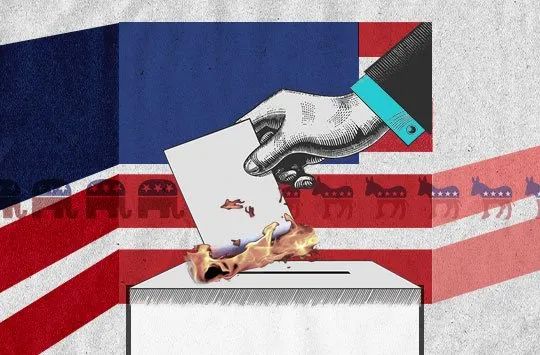
No.3: mid-term elections in the United States
(US midterms)
The mid-term election in 2022 will be one of the most important mid-term elections in American history. The vote will be held when both Democrats and Republicans are accused of fraud. They will arrange the presidential election in 2024. If Donald Trump runs, he will either win directly or try to steal it. This year’s vote itself will not trigger a crisis, but it represents a historic turning point.
It is a foregone conclusion that the Republican Party will win the mid-term elections. The cooperation between the two parties will soon be stifled, especially because the impeachment procedure for Biden will be the top agenda of the Republican Party. To make matters worse, public trust in American political institutions will be hit again.
This year’s vote itself will not trigger a crisis, but it represents a historic turning point.
But more importantly, what the mid-term elections mean for the 2024 presidential election.
Trump has hinted that he will run for president again. If Donald Trump stands for election, he will either win outright or try to steal it. If Trump loses the election, Trump will not give up without a fight. The United States may eventually hold a "broken" or "stolen" election, which will have a far-reaching impact at home and abroad.
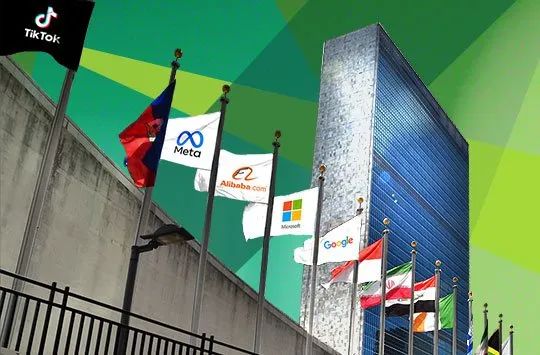
No.2: monopoly of technology giants
(Technopolar world)
It’s 2022. Your personal information will be hacked. Algorithms with biased data will make destructive decisions and affect the lives, work and love of billions of people. Online thugs will create chaos, incite violence and trigger a run on the stock market. Tens of millions of people will be dragged into the rabbit hole of conspiracy theories. What all these realities have in common is that they all come from the digital space, in which a few large technology companies, rather than the government, are the main participants and executors.
Key parts of people’s daily lives, even some basic functions of the country, are increasingly in the digital world, and the future is being shaped by technology companies and decentralized blockchain projects. Countries will be unable to stop this trend. The largest technology companies are designing, building and managing a new geopolitical dimension. By 2022, individuals will spend more time in digital space, work and family. Most of the time will be spent on "Metauniverse", which is a new and more immersive network version, and all the problems of digital governance will be magnified.
This is not just a challenge for the United States or the West. This is also a problem for developing countries. In developing countries, the government is faced with a more severe trade-off, not only to obtain the digital services needed to seize economic opportunities in the 21st century, but also to face the risks brought by poor network security or viral false information.
If the real world is a mess because no country is willing or able to play a global leadership role, then the governance of digital space is even worse. This is not to say that the technology giants have failed, but that their systems and governance capabilities have not yet caught up with their power and influence. The ineffective governance of science and technology giants will bring costs to society and enterprises.

No.1: COVID-19’s "zero clearing" policy
(No zero Covid)
We have completed the pandemic. We haven’t finished yet. The finish line depends on where you live.
COVID-19’s "zero clearing" policy has brought huge supply chain advantages, but with the realization of group immunization under the coexistence mode, the zero clearing policy may bring huge risks, bring great uncertainty to the world economy, and aggravate the global supply chain crisis and inflationary pressure.
For the world, this means more supply chain disruptions. Shipping restrictions, the outbreak of COVID-19 epidemic, and the shortage of personnel, raw materials and equipment will be aggravated by the failure of "clearing" in COVID-19, which will reduce the supply of goods. In addition, the high price of shipping will also hurt small and medium-sized enterprises, who have no resources to book containers, let alone ships. In 2022, supply restrictions will be reduced, but supply disruptions in many industries will continue. These supply chain problems will prompt the government to intervene, but state intervention may further distort the market and delay the adjustment incentives, thus making things worse.
At the same time, it also means more sustained inflation on a larger scale in the world. High inflation will breed inequality, aggravate economic insecurity and public dissatisfaction, and will continue to be a primary economic and political challenge. This will bring problems to central banks, who must strike a balance between promoting economic recovery and curbing price increases. Central banks in many emerging market countries have been forced to raise interest rates to curb rising inflation (and expectations of more inflation).
In 2022, emerging markets will continue to be hit by the COVID-19 epidemic. The demand for booster shots in rich countries will hinder the popularization of effective vaccines. The new epidemic will slow down the economic growth of emerging markets and make poorer governments bear more debts.
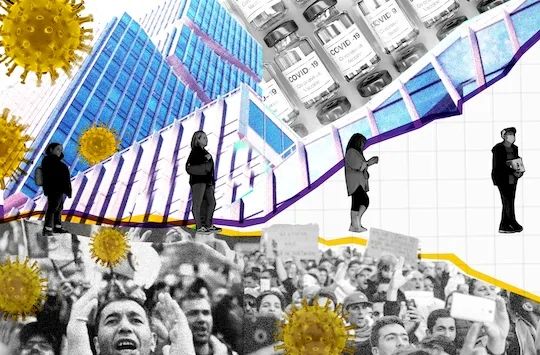
The above is a brief summary of the top ten global risk reports of Eurasia Group in 2022. It should be emphasized that this article, except for the remarks in brackets, is all the views in the report of Eurasia Group and does not represent the position of Qingquan. It must be said that some statements in the report are full of arrogance and prejudice of mainstream consulting think tanks in the United States and the West.
But overall, the report is full of professionalism, global vision and in-depth analysis. In fact, its core view is that the United States is the most powerful country in the world, but it is also the most divided, economically unequal and least vaccinated country among the G7 industrialized developed countries. China is the world’s second largest economy, but after 40 years of extraordinary growth, it is also facing enormous challenges, both to maintain growth and stability. Although the all-round game between China and the United States is intensifying and has reached the stage of "strategic stalemate", in the coming period, both sides will put more energy into the country, which reduces the possibility of conflict, but it also means less global leadership and coordination to meet the challenges of the world. The world will face a "G-0" era, and perhaps this is the biggest risk.
(The website of Eurasia Group’s report: Eurasia Group _ toprisks 2022.pdf. Part of this article refers to the statement in the "economic machine". This article was first published on WeChat WeChat official account "Qingquan Energy SpringEnergy", and is reproduced with authorization. This article only represents the author’s personal views, and has nothing to do with the position of Peking University Regional and National Research Institute. For quotation and reprinting, please contact "Qingquan Energy" WeChat WeChat official account. )

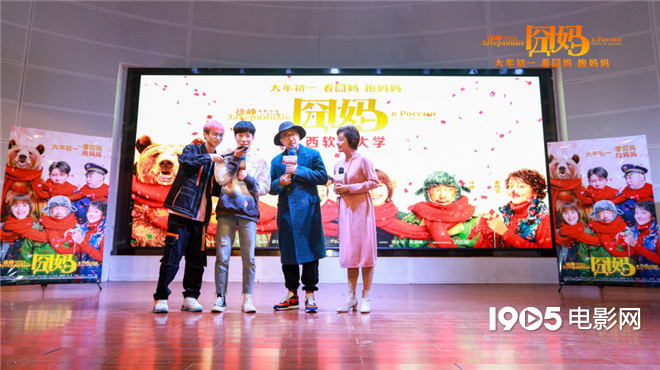


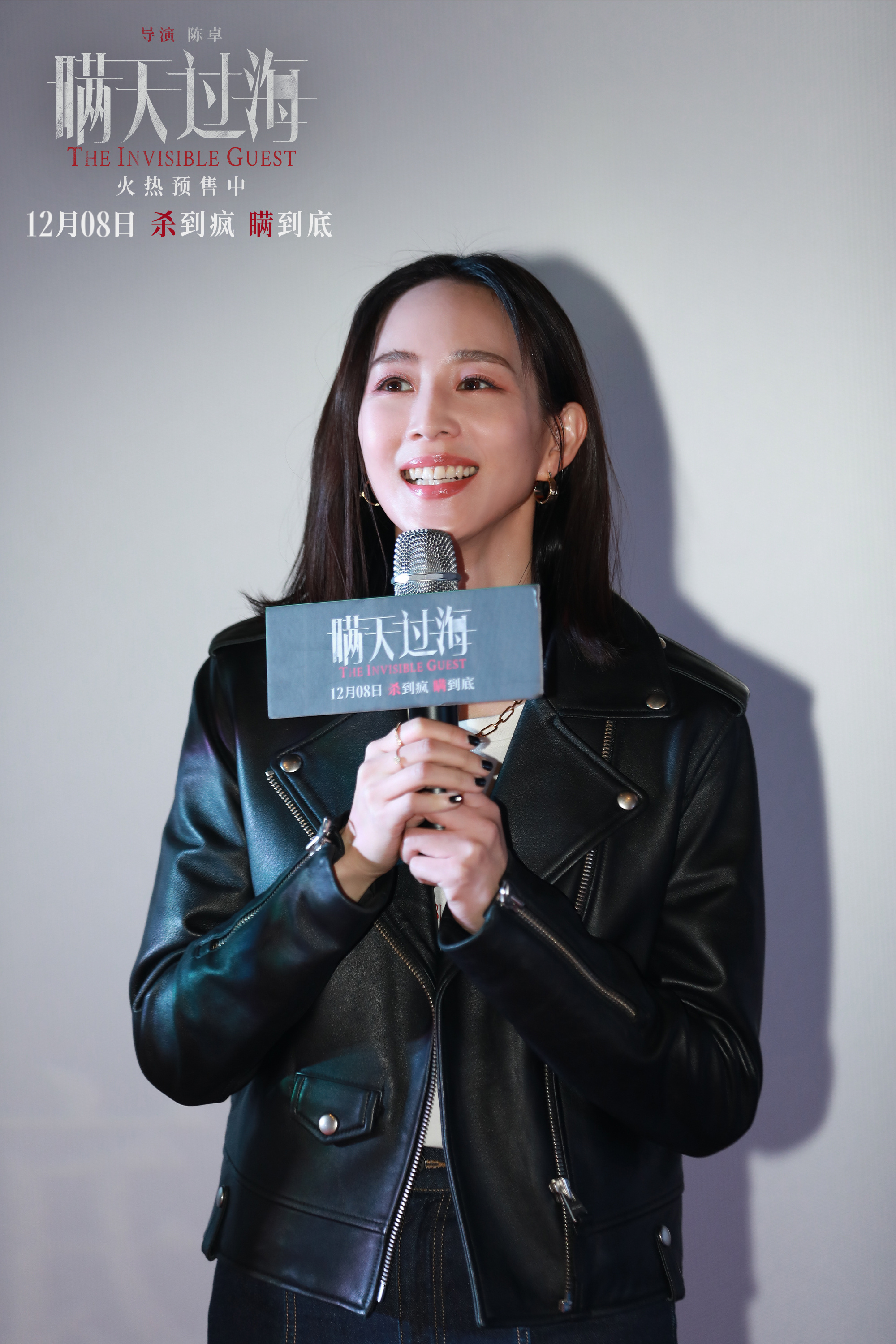






















 We have no tomorrow
We have no tomorrow
 Rashomon
Rashomon
 Night of heels
Night of heels